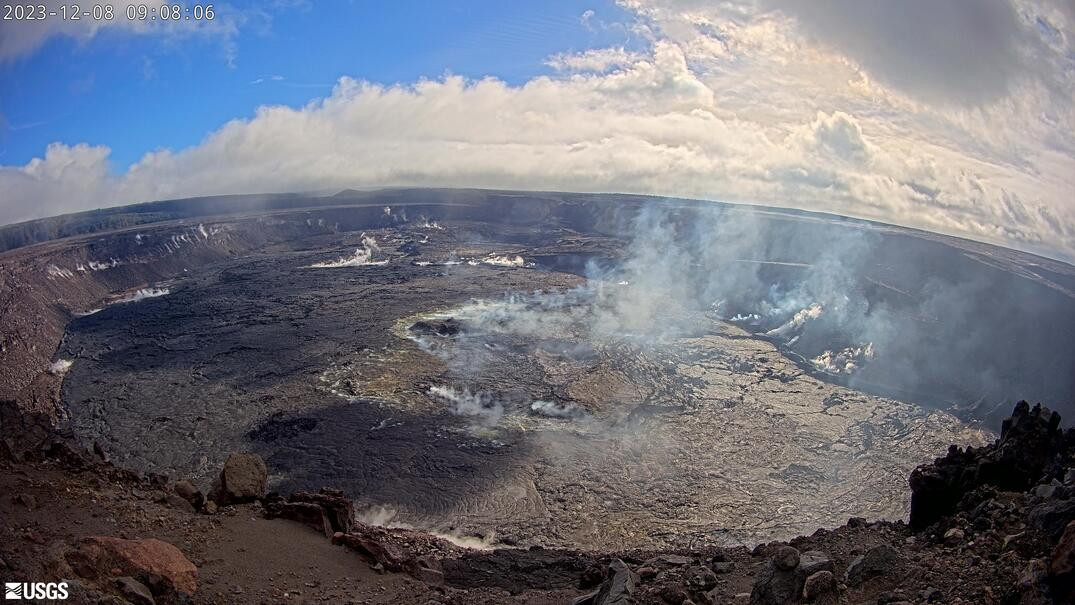(BIVN) – Kīlauea volcano is not erupting. Scientists report moderate seismicity in the summit region, upper East Rift Zone, and Southwest Rift Zone over the past day.
The USGS Volcano Alert Level for Kīlauea remains at ADVISORY, although the Hawaiian Volcano Observatory continues to say an eruption “could occur in the near future with little or no warning.”
HVO says the Kīlauea summit region remains unsettled, “with a high level of inflation and moderate seismic activity.”
Earthquakes on the upper East Rift Zone also increased slightly throughout the day yesterday, “and in the evening there was a small earthquake swarm that lasted a little under an hour,” scientists say.
“Seismicity in the Southwest Rift Zone also increased slightly during the same period, but rates of earthquakes here are still diminished compared to several weeks ago,” the Observatory wrote. “Slightly elevated seismicity continues in both areas at this time.” Most of the earthquakes have been small, measuring less than magnitude-2.0.
No unusual activity has been noted along the middle and lower East Rift Zones, HVO says.
From the USGS HVO on Friday, December 8th:
Summit Observations: Seismicity in Kīlauea’s summit region began climbing late on December 6, and over the past day there have been brief periods of heightened earthquake rates. Activity has not reached the levels that immediately preceded recent summit eruptions, but slightly elevated seismicity continues at this time. Most of the earthquakes are focused in two clusters just south and southeast of Kaluapele, Kīlauea’s summit caldera.
The Uēkahuna summit tiltmeter—located northwest of the caldera—tracked a small deflation-inflation (DI) event yesterday morning, and another beginning yesterday evening that is still proceeding though its inflationary phase this morning. The Sand Hill tiltmeter—located southwest of the caldera—has tracked similar trends. Overall, the summit of Kīlauea remains at a high level of inflation; relative tilt is above the level reached prior to the most recent eruption in September 2023, and it is higher than at any time since the 2018 eruption.
Sulfur dioxide (SO2) gas emission rates remain low. Field measurements indicated an SO2 emission rate of approximately 70 tonnes per day on December 5, which was similar to measurements in October and November.
There are currently no signs of an imminent eruption, but the summit region remains unsettled, with a high level of inflation and moderate seismic activity. The onsets of previous summit eruptions have been marked by strong swarms of earthquakes caused by the emplacement of a dike 1–2 hours before the appearance of lava, and these swarms are not being detected at this time.
As of Friday morning, there were no additional closures in Hawaiʻi Volcanoes National Park due to the volcanic unrest, aside from the continued closure of the Mauna Iki Trail and the Kaʻū Desert Trail (south of the Footprints exhibit to the Mauna Iki Trail intersection) in the Southwest Rift Zone.


by Big Island Video News10:03 am
on at
STORY SUMMARY
HAWAIʻI VOLCANOES NATIONAL PARK - Although activity "has not reached the levels that immediately preceded recent summit eruptions", elevated seismicity continues at this time.